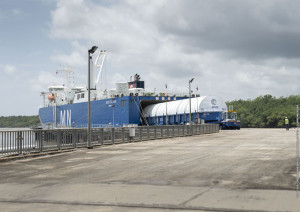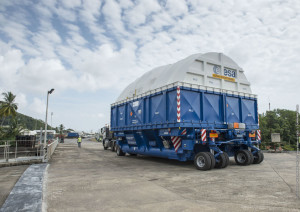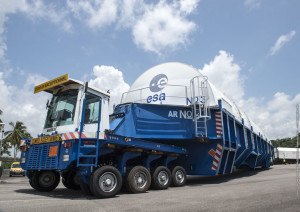The first Ariane 5 rocket modified to carry four Galileo satellites into orbit has arrived at Europe’s Spaceport in French Guiana for a November launch.
So far, 14 Galileo satellites have been launched two by two on Soyuz rockets from French Guiana. This inaugural launch by Ariane 5 will boost that number to 18.
The MN Colibri roll-on/roll-off ship, built to transport European rocket elements, reached French Guiana’s Pariacabo Port on 22 August.
The cargo included Ariane’s cryogenic core stage, its upper stage and payload fairing. This Ariane variant is based on the launcher previously used to place ESA’s 20 tonne Automated Transfer Vehicle supply vehicle into low orbit.
This version has to carry a lower mass – four fully fuelled 738 kg Galileo satellites plus their dispenser – but needs to take it up to the much higher altitude of 23 222 km.
The target orbit is actually 300 km below the Galileo constellation’s final working altitude: this leaves Ariane’s upper stage in a stable ‘graveyard orbit’, while the quartet of satellites manoeuvre themselves up to their final height.
The four satellites to be launched by this Ariane 5 are due to be flown to French Guiana next week from ESA’s technical centre in Noordwijk, the Netherlands.
The Galileo satellite bus is built by OHB in Bremen, Germany, with the navigation payloads coming from Surrey Satellite Technology in the UK, involving supplied from all across Europe. They are then tested in simulated launch and space conditions in Noordwijk before being accepted for launch.



